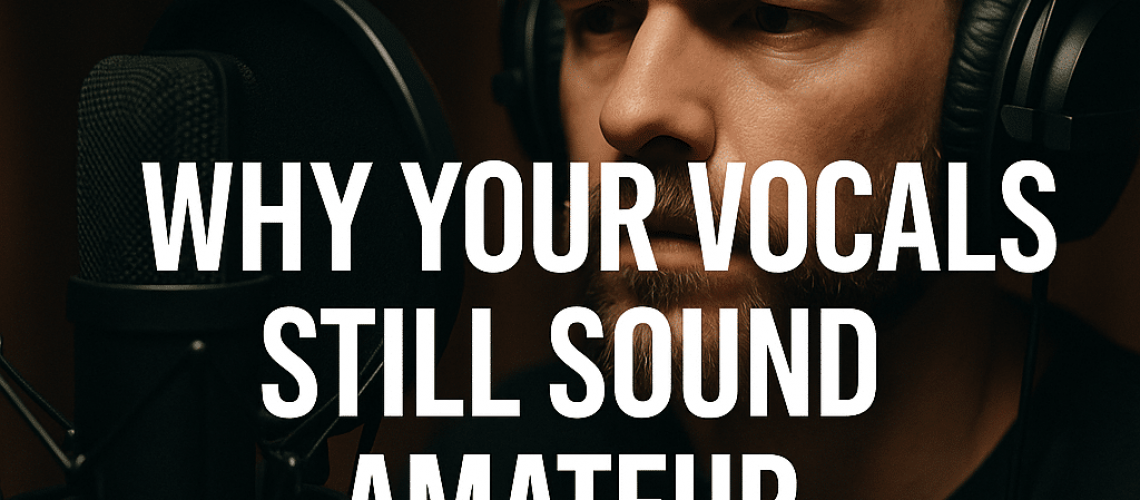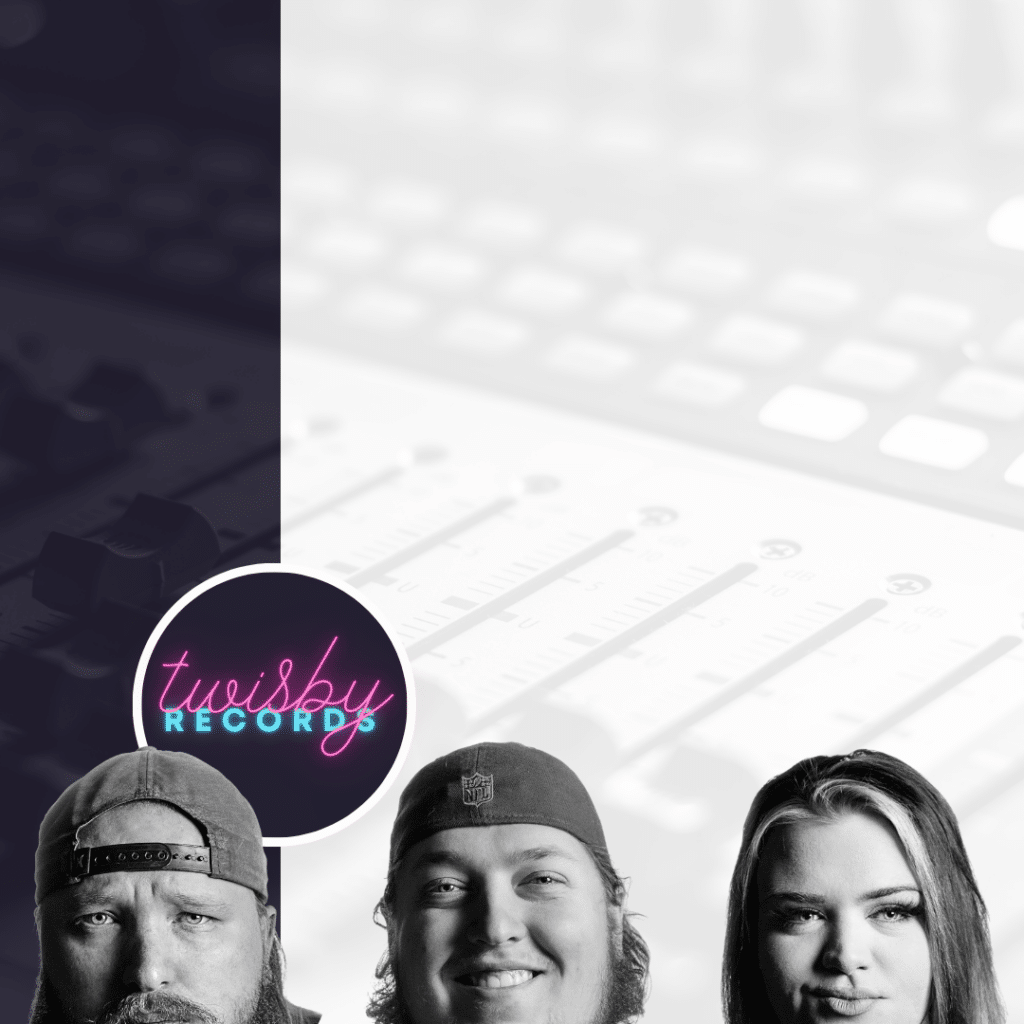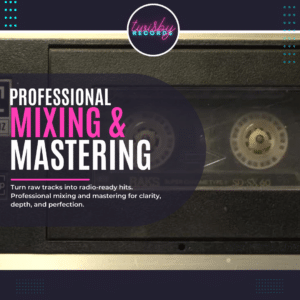If you came here looking for the secret EQ curve or compressor ratio that’ll suddenly make your vocals sound professional, let’s stop right there.
That doesn’t exist.
Anyone who tells you it does should be banned from Wi-Fi until further notice.
I get why you believe it. You’ve seen the thumbnails. “Pro Vocal Chain Preset,” “Perfect EQ Settings for Any Voice,” “Mix Vocals Like the Pros.” I’ve been there too.
You watch a few tutorials, stack the same plugins, copy the same settings, and think you’ve finally cracked it.
Then you hit play and realize something’s still missing.
It’s just meh
It sounds like karaoke with a nicer mic.
So you tweak the attack time. You boost the highs. You throw another plugin in the chain. Still wrong.
So hears the part where artists need to realize what they don’t want to hear:
it’s not the settings. It’s the source.
If your performance doesn’t carry emotion, if the room is killing your tone before it even hits the converter, no combination of plugins will ever make it sound professional.
So no, this isn’t another article by some hack job about some magical settings. This is about the stuff that actually makes vocals hit, the stuff everyone ignores because it can’t be packaged in a preset.
Table of Contents
Still Chasing Vocal Settings? Here’s Why They Don’t Work
We’ve all been there.
You pull up a tutorial and someone confidently says, “Set your compressor to 4:1, threshold at -10, add a high shelf at 12k, and boom pro vocals.”
Except you try it, and you still sound like you tracked your vocals in a garage.
That’s because those settings only work in one room, with one voice, on one mic. Yours isn’t that voice, or that room.
Compression, EQ, saturation, they’re not recipes. They’re reactions.
A 4:1 ratio might gently control one voice and absolutely choke another.
A 10k boost might add shimmer for one singer and harshness for the next.
There’s no “perfect” vocal chain.
There’s just awareness, knowing how your tone, your mic, and your room interact.
I’ve mixed vocals recorded on $100 USB mics that felt alive, and vocals tracked on vintage Neumanns that had less life in them than roadkill.
Settings don’t make a vocal professional. Intention does.
It’s Not Your Plugins, It’s the Room and the Performance
Let’s talk about the thing that matters most before you ever hit record: your room.
For some reason, the internet told everyone that closets make great vocal booths. They don’t.
When sound bounces off every surface within arm’s reach, it starts canceling itself out, that’s comb filtering. It’s what makes your takes sound boxy, thin, and flat no matter how clean your chain is. Once that’s printed, it’s permanent.
Here’s how to actually find a usable room:
- Take your mic and walk around your space.
- Sing a few lines in different rooms.
- Record and listen back.
- Pick the one that sounds most like your real voice, and doesn’t have a bunch of obvious reflections (“reverb”) behind them
That’s your room.
Its better to find a larger deadish space that doesn’t have reflections, than a small closet with that crappy auralex stuff you always see every where.
And while we’re at it, stop assuming gear will replace performance.
A cheap mic recording with real emotion will beat a sterile $5,000 signal chain every single time.
The Day a Perfect Studio Killed a Great Vocal
A while back, I worked with a guy named Tim. Around Pittsburgh, everyone knew him, hundreds of shows, total pro, one of those voices that just sits in a mix naturally.
A local radio station was putting together a compilation album of regional legends and wanted Tim on it. The catch? He had to record the song at their chosen studio, with their engineer. He was paying for it, but they’d only accept a track delivered through their guy.
Tim didn’t want to walk into that session blind, so he came to me first to put together a demo. Something to give him a roadmap before he stepped into the “real” studio.
All he had was a voice memo. Just him humming and mumbling fragments of lyrics.
I took that memo, built out a structure with a looped guitar and a basic drum pattern, and said, “Let’s get something down so you have direction.”
He came in and tracked vocals on a meh mic (Slate VMS i believe) into an apollo, nothing fancy, in a not-great space. But that session had life.
I gave him direction, kept him locked in emotionally, reminded him what the song was supposed to feel like.
Not “hit this note perfect,” but “remember why you wrote it.”
We recorded a few takes, tried different deliveries, threw around ideas, and by the time he left, we had something that felt real.
The demo wasn’t pristine. It was raw. But it had truth.
That’s when he said something that FLOORED me …. in all of his time recording nobody had ever given him direction. Just stuffed him in a room, hit record, and that was it. My god man ….. is that really what yall are doing out there these days? No wonder brick and mortar studios are all dying …. but i digress.
A few weeks later, he went into the radio station’s studio to cut the official version. I wasn’t allowed to go.
When I heard the finished track, I almost laughed.
It was technically flawless, crystal clear, tuned, mixed.
And it sounded like someone else entirely.
The phrasing was rigid, the timing sterile, the emotion gone. They’d polished the humanity right out of it. There was just no life.
He hated it too. Told me he didn’t even want to release it.
And that’s when it hit me again: the demo, recorded on entry level gear in a bad room had more life than the thousand-dollar version that followed.
Because what makes a vocal great isn’t the chain, or the preamp, or the acoustic treatment.
It’s the direction, the honesty, and the moment.
Clean Vocals Aren’t the Same as Good Vocals
Clean is easy.
Good is rare.
A clean vocal is technically correct quiet, bright, and safe.
A good vocal feels like a human being is standing in front of you.
When Adele cracks, you believe her. When Chris Stapleton’s voice distorts, it pulls you in closer. None of those takes are “perfect.” They’re human. Does the gear HELP them? Abso-friggin-lutely.
So if you’re chasing “studio clean,” stop. You’re not trying to remove imperfections. You’re trying to keep the parts that make people believe you.
That’s what makes it professional.
Why You Can’t Fix Vocals in the Mix (No Matter What You’ve Heard)
Every engineer has heard it: “We’ll fix it in the mix.”
No, you won’t.
Mixing is refinement, not resurrection. TAKE THE TIME TO MAKE IT SOUND GOOD GOING IN. IF its boxy, or thin, move away from the mic, move closer, move to a different room, experiment. If that still doesn’t sound right, try another mic. If the mic sounds “Dark” learn how to read and interpret the frequency chart so you can see if its something you are doing, or what the mic is meant to do.
Then theres the performance side.
If the emotion isn’t there when you track it, no plugin is going to bring it back.
You can EQ frequencies. You can’t EQ feeling.
You can compress a dynamic range. You can’t compress conviction.
If the vocal doesn’t move you before you touch it, all you’ll do is make it louder and cleaner not better.
That’s the truth nobody on YouTube wants to tell you.
Stop Mixing, Start Producing (The Real Secret to Pro Vocals)
The biggest difference between amateur and professional isn’t the mix, it’s the production.
If the rough version of your song already feels like a record, the mix is just decoration, and that is the endgame. Get to THAT level. Make the song sound like a record before you even start to mix. That’s how the pros do it. Shit in = shit out
If it sounds weak before mixing, no amount of post-processing will save it. Learn how to be INTENTIONAL with your recordings. If it sounds like crap when you get to the mixing phase, it’s gonna sound like crap when you’re done mixing it, and no engineer in the world can fix that.
And this goes with everything. If you play guitar, get both the performance and tone right going in (But always record both a clean and dirty simultaneously so you can reamp it later if needed).
Production is where emotion meets preparation. It’s what gives the mix something worth enhancing.
That’s why great producers aren’t chasing “perfect.” They’re chasing truth. That’s why producers get paid the big bucks. Engineers are technical specialists with an artistic taste, not miracle workers. Work until you’re happy BEFORE the mixing phase, it should sound 90% of the way there by the time you’re ready for it.
If you want a solid foundation for your next project, check out Greazy Does It.
Greazy Wil doesn’t teach cookie-cutter recording tricks he teaches how to actually hear yourself and build emotion into the performance before it ever hits the mix.
That’s how the pros do it.
How to Actually Make Vocals Sound Professional at Home
Alright, let’s boil this down to what actually works:
- Stop chasing magical settings. They don’t exist.
- Find a real room. Use your ears, not forum posts.
- Deaden lightly. Control reflections, don’t strangle the highs. Small rooms will amplify the lows and low mids and nuke the highs, while a larger room may introduce some reverb and high end flutter. find a healthy balance and solid foundation and try to deaden them a little bit.
- Mic technique. 6–8 inches away, slight angle off-axis. If you sound thin move closer, if you have alot of lows move further. If you’re used to moving away from the mic due to live shows, practice turning your head and not moving away from the mic.
- Gain staging. Keep peaks in the yellow, don’t distort, distorting can be great when you are working with ANALOG gear, but digital distortion is awful, avoid it at all costs.
- Clip Gain. Use clip gain to even out your vocal takes, if some words are quieter, bring them up, alot of people reach for a compressor for this, you can get alot further with alot more control manually moving clip gain around to even out your takes.
- Pocketing. Even the best singers and rappers pocket their vocals ….. if it’s good enough for them it’s good enough for you. Don’t over do it, don’t just lock it on the grid, listen for the Feel. If you find yourself moving things around alot, move it to where you feel it should be and re-track it. If the original version still feels better keep it, edits can be masked in a mix. (just make sure you fade any edits in and out to avoid pops)
- Compression. Start at 2:1 or 3:1 Ratio, and REALLY dig into the threshold, turn down the threshold until you can hear what the compressor is doing, play with the attack and release until you know exactly what its doing and can hear it, if you find something you like bring the threshold back down to where you’re hitting -6 to -3 db and gain match to be sure you like it. The roles of a compressor are normally just taming peaks, and evening out or “pinning”
- EQ. Don’t just reach for an eq and start playing around. Ask yourself “What am i trying to accomplish”? before even opening the EQ. Is there a weird resonance? Is it too Dark? Lacking presence? Once you figure out your goal, THEN reach for the EQ (and honestly that goes for any plug-in really)
- Performance. Record like it’s the last take you’ll ever do in your life, a true “leave it all on the field” mentality. SAY WHAT YOU NEED TO SAY DAMMIT! Once you get into the moment don’t lose it. I will ALWAYS recommend having someone run the session for you so you can stay in the moment and not have to switch from emotion to analytical sides, or right brain left brain.
- Production. Make your demo feel like a record before mixing.
- Hire pros when it counts. It’s not giving up it’s leveling up. REAL pros have already solved those problems, they have those answers. Don’t be the musician that learned so much about mixing and mastering that they were all the sudden 35 and didn’t release a song. Learning is a creatives way of procrastinating.
FAQ
Should I record vocals in a closet?
No. Closets are the fastest way to make vocals sound boxy and muffled. The reflections are too close, and they cause comb filtering that kills your tone. You’re better off using a bigger room that sounds natural and lightly treating it with blankets or acoustic panels.
How do I make my vocals sound professional at home?
Focus on performance first. Use a decent condenser mic, record in a room that flatters your voice, and keep peaks around -10 dB. Deaden reflections without choking the highs. If the vocal already feels like a record before mixing, you’re halfway there.
Can I fix bad vocals in the mix?
No. You can’t add information once its recorded. If it’s boomy, or has comb filtering, you’re better off trying again. Also, Mixing can polish tone and balance, but it can’t add emotion or fix a lifeless performance. If it doesn’t move you raw, no plugin will make it move someone else. Record it right from the start.
What EQ settings make vocals sound professional?
There’s no magic EQ curve. Every voice and mic combo is different. Start by cutting low-end rumble (below 80 Hz), remove mud around 200–400 Hz, and only boost highs if your take needs air. Listen, don’t copy presets.
Do I need expensive gear to sound professional?
Not at all. A well-delivered vocal on a $200 setup can outshine an emotionless take on a $5,000 chain. The best investment isn’t the mic it’s your environment, performance, and direction. Does great gear help? Absolutely. Is it needed? No.
How can I reduce room echo when recording vocals?
Avoid small, reflective rooms. Use curtains, rugs, and furniture to break reflections. If you need cheap acoustic treatment, hang thick blankets or duvets behind and beside the mic, but leave some air in the space.
Why do my vocals sound thin even after mixing?
Usually because of poor room acoustics or mic placement. Step back 6–8 inches, angle slightly off-axis, and check for phase issues or comb filtering. No EQ can undo bad tracking or add data that isn’t there.
What’s the difference between clean vocals and good vocals?
Clean vocals are technically correct. Good vocals make people feel something. Don’t chase sterile perfection, chase connection. That’s what people remember.
Is it worth hiring a mixing engineer for vocals?
Yes, if you’re serious. Mixing takes years of trained listening and context. You can absolutely learn, but hiring a pro helps you focus on performance and production the parts that actually make your music believable.
Should I record vocals standing or sitting?
Stand if you can. You’ll breathe easier, control dynamics better, and keep energy in your delivery. Sitting is fine for intimate or soft takes, but standing keeps emotion and projection alive. I do like to sit when I’m writing, and alot of the times those first takes make the final cut, so even if you ARE sitting, you can still make a great record, but it’s just both better and healthier to stand.
How can I make vocals sound professional fast?
Hire someone. That is the fastest way to get your vocals to sound professional. I know that’s not what you want to hear, but it is the truth. It could take you YEARS to get the sound you want. But if that’s absolutely not an option…
Focus on emotion first, not gear. A real performance in a decent room will always sound more professional than a flat take polished with plugins.
What ruins vocal recordings the most?
Small, untreated rooms. They boost the low mids, and cause phase cancellation, ones that data is gone, it can’t be recovered
How do I make vocals sound full and warm?
Step back 6–8 inches from the mic, sing confidently, and treat your room. Fullness starts with tone and mic placement, not EQ.
Why do my vocals sound dull after mixing?
Either its Because the original take was flat, or poor recording techniques. A great mix enhances energy it can’t replace it. Record with emotion, not caution.
What’s the biggest mistake beginners make recording vocals?
Chasing perfection instead of feeling. A cracked but honest take will always beat a polished fake one.
What’s one thing to do before recording vocals?
Check the room with your mic. Find where your voice sounds real, not hollow or harsh. That step alone fixes half your problems.
What mic position makes vocals sound best?
Angle the mic slightly off-axis, about 6–8 inches from your mouth. It cuts harshness and keeps the vocal natural.
Why Professional Vocals Are About Connection, Not Perfection
You’re not chasing studio quality.
You’re chasing a reaction.
When someone presses play, they don’t care what mic you used. They care whether they believe you.
A technically perfect take that doesn’t make anyone feel anything is worthless.
An honest take that shakes someone a little that’s professional.
So stop chasing perfection.
Start chasing connection.
And if you need help getting there, that’s what we do.
















